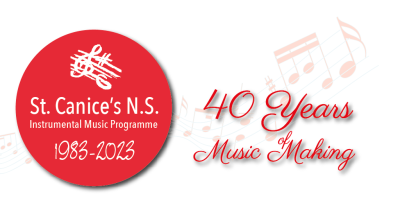The video shows Aoibheann Smyth 5th Class 2013-2014 interviewed and performing in Senior Orchestra in the programme “Meet The Orchestra” recorded in May 2013 and aired on RTE Junior in September 2013
The Piano can be a member of the orchestra or a solo instrument.
The first piano was built as early as 1694 and replaced the harpsichord as the most popular keyboard instrument of the Romantic era. The piano was first referred to as a pianoforte which means soft (piano) loud (forte) instrument. It was named the pianoforte because, unlike the harpsichord, it allowed the player to control the degree of loudness and softness of a note by the way he/she would strike a key.
Playing the piano often involves the use of all ten fingers and sometimes both of your feet. To make a sound, simply press a key down. The softer or harder and slower or faster the pianist presses a key will determine the sound quality of the note. The three pedals, controlled by the pianists feet, also change the tone of the piano. They include the damper pedal, the soft pedal, and the sostenuto pedal. The damper pedal is the most used pedal by far, serving to sustain the notes that have been played. The soft pedal, which may be locked in place during a performance, serves to lighten the intensity of the notes. The last pedal, the sostenuto pedal, makes it possible to sustain some notes while allowing the player to play detached sounds on another part of the keyboard.
St Canice’s pianists can perform alone or in a duo to perform duets or even play with other members of the orchestra.
